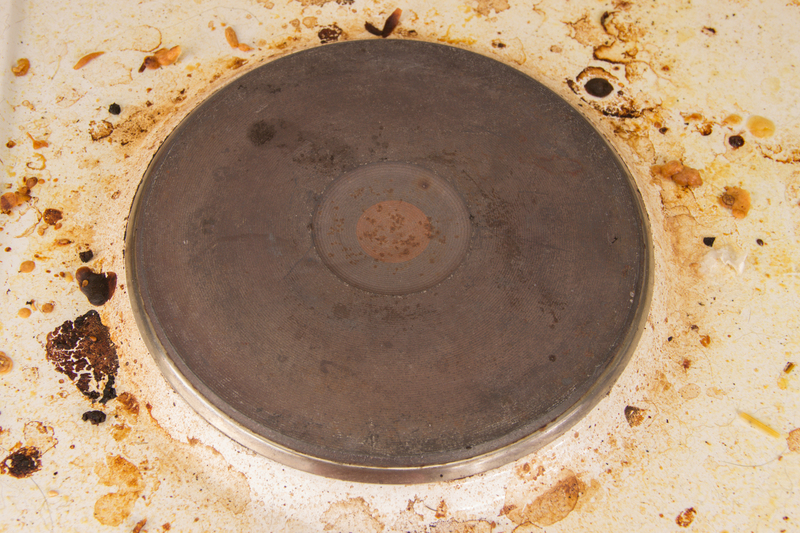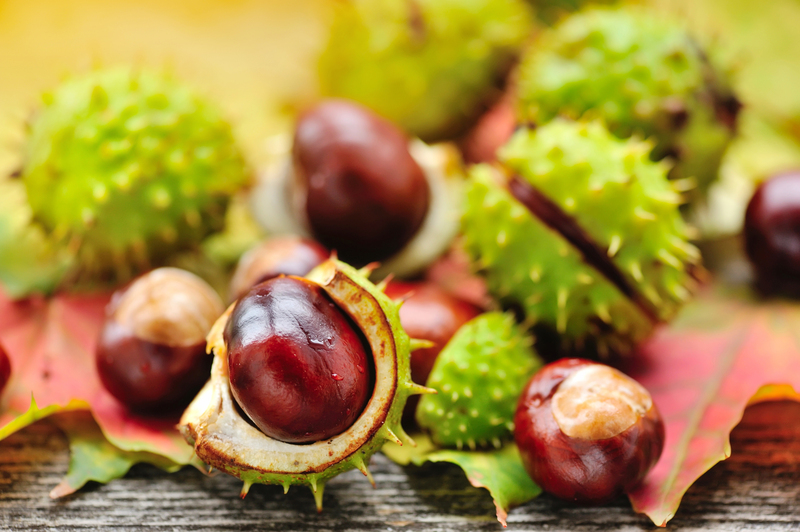Comprehensive Guide to Jewellery Cleaning Methods
Posted on 25/09/2025
Comprehensive Guide to Jewellery Cleaning Methods
Jewellery reveals our personality, affirms personal style, and often carries precious stories or memories. Over time, even the most brilliant pieces can lose their luster due to daily wear, exposure to elements, and natural oils from skin contact. That's why mastering effective jewellery cleaning methods is crucial for preserving their charm and ensuring longevity.
Why Is It Important to Clean Your Jewellery Regularly?
Regularly cleaning your jewellery does much more than maintain its aesthetic appeal.
- Prevents dirt and grime buildup: Everyday activities expose jewellery to dirt, lotions, makeup, and sweat, leading to a dull appearance.
- Extends lifespan: Consistent maintenance prevents corrosion and reduces the risk of permanent damage.
- Health benefits: Removing accumulated bacteria and germs safeguards against skin irritations and allergies.
- Value preservation: Clean jewellery pieces command higher market value, especially for luxury or antique items.
Therefore, understanding and applying various jewellery cleaning techniques is not just about fashion, but also about investment and health.

Understanding Jewellery Types and Materials
Not all jewellery is made equal. Different gems, metals, and settings require unique approaches. Applying the wrong cleaner or method can result in discoloration or damage. Before we delve into specific cleaning methods, let's look at the most common types:
- Precious Metals: Gold, silver, platinum, and their alloys.
- Gemstones: Diamonds, sapphires, emeralds, rubies, and semi-precious stones.
- Fashion Jewellery: Costume pieces featuring synthetic stones or plated metals.
- Pearls and Organics: Pearls, coral, and amber, which are more delicate.
General Precautions for Jewellery Cleaning
- Read care instructions: Whenever possible, refer to manufacturer or jeweler recommendations.
- Test first: Apply any new cleaning solution to a small, inconspicuous area before full application.
- Avoid harsh chemicals: Substances like bleach, ammonia, and acetone can cause irreversible damage.
- Use proper tools: Select soft brushes and lint-free cloths to avoid scratching.
- Never use ultrasonic cleaners for delicate or glued jewellery: The vibration can dislodge settings or damage certain stones.
Effective Jewellery Cleaning Methods
Let's explore tried and tested methods, tailored to popular types of jewellery:
1. Soap and Water Method (Universal Approach)
- Best for: Gold, platinum, diamonds, and most hard gemstones.
- Tools needed: Mild dish soap, lukewarm water, soft-bristled toothbrush, microfiber cloth.
Steps:
- Mix: A few drops of mild liquid soap in a bowl of warm (not hot) water.
- Soak: Immerse the jewellery for 10-20 minutes.
- Brush: Gently scrub crevices and behind stones with a soft toothbrush.
- Rinse: Wash under warm running water.
- Dry: Pat dry with a lint-free or microfiber cloth. Avoid paper towels, which can scratch metal.
Note: For pieces containing pearls, opals, or turquoise, do not soak the item--simply dampen the cloth and wipe gently.
2. Baking Soda and Water Paste (Restoring Shimmer)
- Best for: Tarnished silver jewellery.
- Tools needed: Baking soda, water, soft cloth.
Steps:
- Make a paste: Combine 2 parts baking soda with 1 part water.
- Apply: Gently rub the paste onto the silver using your fingers or a cloth.
- Rinse thoroughly: Ensure all paste is removed to prevent residue.
- Dry and polish: Buff with a clean, soft cloth for a brilliant finish.
Warning: Avoid using baking soda on pieces with oxidized details or soft stones as it may abrade the surface.
3. Professional Jewellery Cleaner Solutions
- Best for: High-value diamond, gold, and platinum items; also certain colored stones.
- Tools needed: Commercial cleaner, as per guidelines, soft-bristled brush.
Method:
- Follow instructions: Always read the label for dilution and soaking times.
- Soak: Place jewellery in the provided cleaning tray or a shallow dish.
- Brush gently: If advised, use a soft brush to dislodge dirt.
- Rinse and dry: Finish with a gentle rinse and dry completely.
Tip: Never use silver cleaners on gold-filled or costume jewellery.
4. Ultrasonic Cleaners (Deep Cleaning)
- Best for: Plain gold, platinum, diamond jewellery without glued stones or soft gems.
- Not suitable for: Pearls, emeralds, opals, turquoise, or items with fragile settings.
How it works: Ultrasonic vibrations dislodge minute particles of debris from hard-to-reach places.
Steps:- Fill the tank: Use special solution or water as recommended.
- Place jewellery in basket: Ensure items do not touch each other.
- Run the machine: Stick to the suggested time--over-cleaning can loosen settings.
- Rinse and dry: Clean thoroughly post-soak.
Professional jewellers can best advise if your pieces are suitable for ultrasonic cleaning.
5. Vinegar and Baking Soda (For Pure Silver)
- Best for: Solid silver items (not for gemstones or mixed-metal jewellery).
Steps:
- Prepare solution: Mix 1/2 cup of white vinegar with 2 tablespoons of baking soda.
- Soak: Place silver in the mixture for 2-3 hours.
- Rinse and buff dry: Finish by polishing with a soft cloth.
Warning: Do not use this method on silver-plated, oxidized, or gemstone-containing pieces.
6. Ammonia Solution (For Diamonds Only)
- Best for: Diamond jewellery (avoid on pearls, gold, silver, or soft stones).
How to use:
- Mix 1 part ammonia to 6 parts water.
- Soak the diamond jewellery for no more than 1 minute.
- Brush and rinse gently then dry with lint-free cloth.
Specialised Cleaning Methods for Different Jewellery Types
Pearls and Other Organic Gems
Pearls, amber, and corals require extra care due to their porous and delicate structures. Never soak or use harsh abrasives. Instead:
- Wipe with a soft, damp cloth after every wear.
- Use a mild soap solution for occasional deeper cleaning; never submerge.
- Dry flat to prevent the silk thread from stretching.
Costume & Fashion Jewellery
Most costume jewellery contains base metals or glued stones, easily damaged by water or chemicals.
- Wipe gently with a soft, dry cloth after use.
- If necessary, dampen the cloth slightly; avoid soaking.
- For persistent grime, use a cotton bud dipped in diluted dish soap, then dry immediately.
Heavily Tarnished Silver Pieces
For intricate items or heavy tarnish, try the aluminum foil bath:
- Line a bowl with aluminum foil (shiny side up).
- Sprinkle baking soda and salt over the foil.
- Pour in hot water, gently place the silver items touching the foil.
- Let sit for 5-10 minutes--the reaction will transfer tarnish to the foil.
- Rinse and dry thoroughly.
Common Jewellery Cleaning Mistakes to Avoid
- Using toothpaste or baking powder on gold: These abrasives scratch soft metal.
- Putting all jewellery in one cleaner: Cross-contamination can damage mixed materials.
- Exposing jewellery to chlorine: Pools and cleaners containing chlorine weaken gold and platinum.
- Forgetting routine checks: Loose stones, clasps, or settings may worsen during cleaning if unattended.
- Not drying thoroughly: Trapped moisture can tarnish metals or weaken adhesives.
DIY Jewellery Cleaning vs. Professional Services
While home jewellery cleaning methods are effective for regular maintenance, some situations call for a professional touch:
- Pieces containing intricate filigree, aged adhesives, or valuable stones.
- Repair of broken prongs, settings, or chain links.
- Restoration of antique, estate, or vintage pieces.
Essential Tools and Supplies for Jewellery Care
Equip your jewellery cleaning kit with these essentials:
- Soft-bristled, baby or cosmetic toothbrush
- Non-abrasive, lint-free cloths
- Mild (ammonia- and phosphate-free) dish soap
- Baking soda and white vinegar
- Commercial jewellery cleaning solution
- Cotton buds
- Small bowls or trays for soaking
- Aluminum foil (for silver baths)
How Often Should You Clean Your Jewellery?
Frequency depends on the usage:
- Everyday rings and studs: Weekly cleaning with mild methods
- Occasional jewellery: Monthly maintenance is sufficient
- Delicate or costume jewellery: Clean only as needed to prevent damage
Expert Tips for Long-Lasting Shine
- Remove jewellery during: Gardening, sports, swimming, or applying lotions and sprays.
- Store with care: Soft pouches, separate compartments, or anti-tarnish paper for silver.
- Avoid prolonged sun or heat exposure for organic gems and pearls.
- Refresh wedding and engagement rings: Have them professionally cleaned at least once a year.

Frequently Asked Questions About Jewellery Cleaning
- Can I use ultrasonic cleaners for pearls or opals?
No, these methods damage soft and porous gems. - Is toothpaste safe for silver?
It's abrasive and can scratch, so use a silver polish or baking soda paste instead. - How do I restore sparkle to my diamond ring?
Soak in mild dish soap solution, brush gently, rinse, and dry with a soft cloth. - What should I avoid when cleaning gold jewellery?
Harsh chemicals, chlorine exposures, and mechanical abrasives. - Can I clean jewellery with baking soda?
Yes, for solid silver or gold, but avoid using it on soft stones or plated items.
Conclusion: Let Your Jewellery Sparkle for Years
Properly cleaned and cared-for jewellery glows with beauty and significance. Whether you choose simple soap and water cleaning, DIY silver restoration, or professional ultrasonic treatment, the right approach keeps heirlooms and everyday pieces shining bright.
*Protect, clean, and inspect your treasured adornments vigilantly, and they'll continue to reflect both your style and your cherished moments--for generations to come.*
Looking for reliable advice on jewellery cleaning techniques? Bookmark this guide and keep your collection sparkling!



